Chinese takeout is a beloved go-to for comfort food cravings, but not every dish on the menu is as harmless as it seems. From deep-fried appetizers to sugar-laden entrees, some popular picks pack more fat, sodium, and empty calories than you’d expect—leaving you feeling weighed down instead of satisfied. While these dishes may taste delicious in the moment, they often come with a heavy nutritional price tag. If you’re trying to make smarter choices or simply avoid post-meal regret, steer clear of these deceptively unhealthy favorites. Here are 18 Chinese takeout dishes that just aren’t worth the calories.
1. Sweet and Sour Chicken
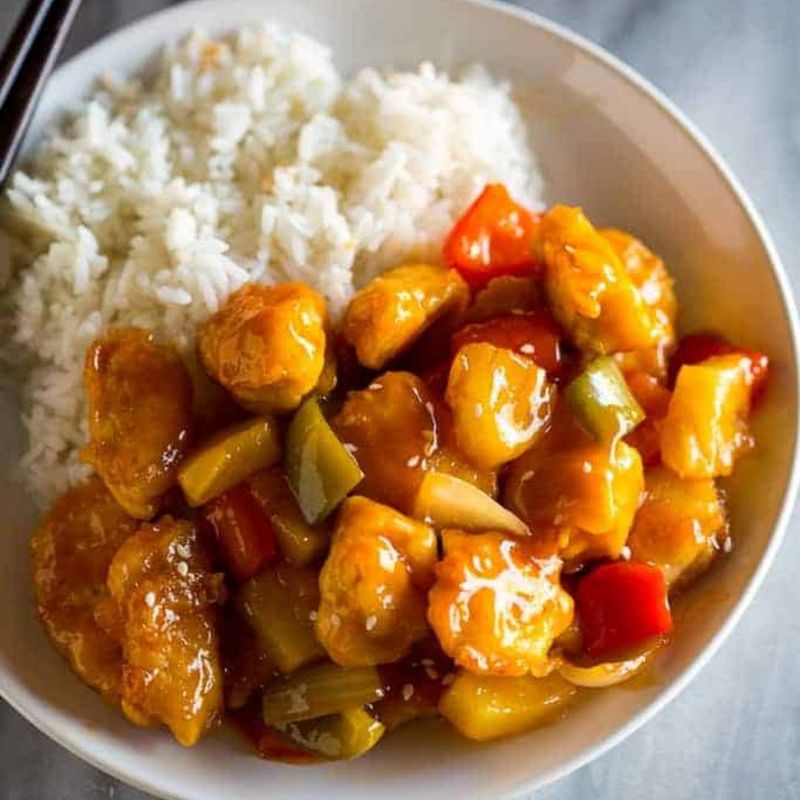
Don’t be fooled by the cheerful glaze—this dish is a calorie bomb in disguise. Sweet and sour chicken is often deep-fried in a thick batter and drenched in a sticky sauce made primarily from sugar and vinegar.
While the flavor may hit that nostalgic takeout craving, the breading and syrupy coating can easily turn a single serving into a day’s worth of sodium and fat.
With minimal vegetables and barely-there nutritional value, this popular pick is more sugar rush than substance. If you’re watching your health, skip the neon glow and go for a lighter stir-fry instead.
2. Fried Rice
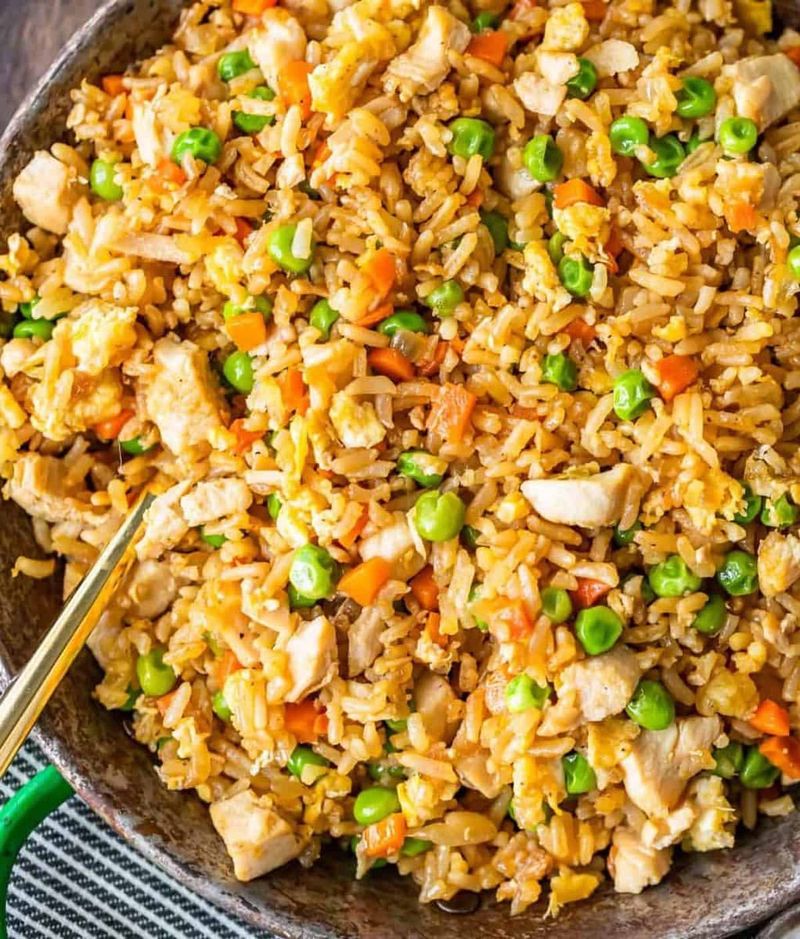
It may sound like a harmless side, but fried rice can quietly sabotage your meal. Often stir-fried in excessive oil and soy sauce, it delivers a hefty dose of sodium, calories, and refined carbs with little fiber or nutritional payoff.
Add-ons like pork or shrimp sound healthy, but the oily base makes it a heavy-hitter no matter the topping. What could have been a wholesome rice dish is usually greasy and lacking in veggies. For a smarter option, swap it with steamed brown rice or ask for a vegetable-heavy version with less oil and salt.
3. General Tso’s Chicken
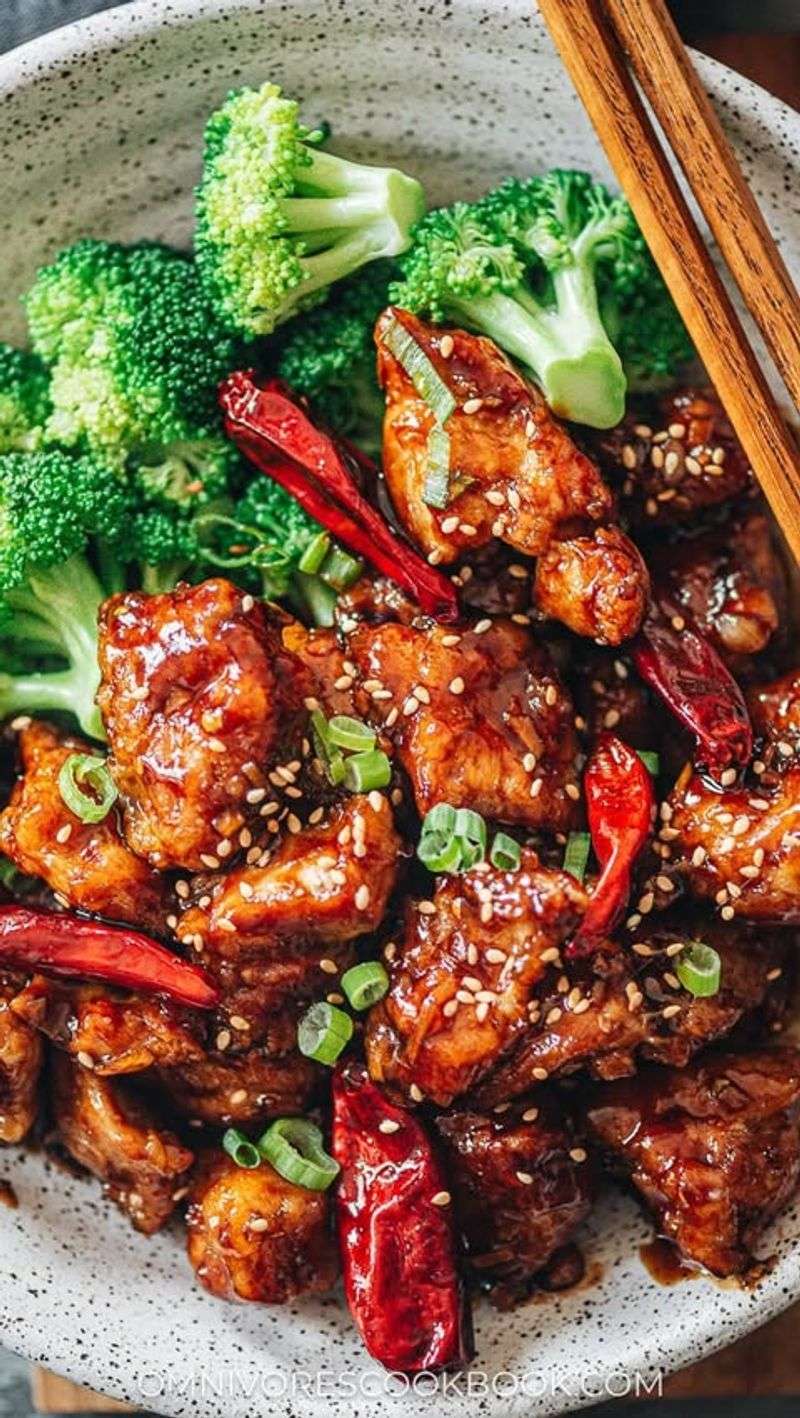
This dish may taste like takeout perfection, but it’s a fried and sugar-coated calorie bomb. Each piece of chicken is deep-fried and bathed in a sticky, sweet sauce that adds tons of hidden sugar and sodium.
One serving can rack up more than 1,200 calories before you even touch your rice. The breading and sauce combo quickly turns protein into dessert-like fare.
While it satisfies cravings, it does little for your health. If you love bold flavors, ask for grilled chicken with spicy garlic sauce or make a lighter version at home to skip the deep-fry guilt.
4. Egg Rolls
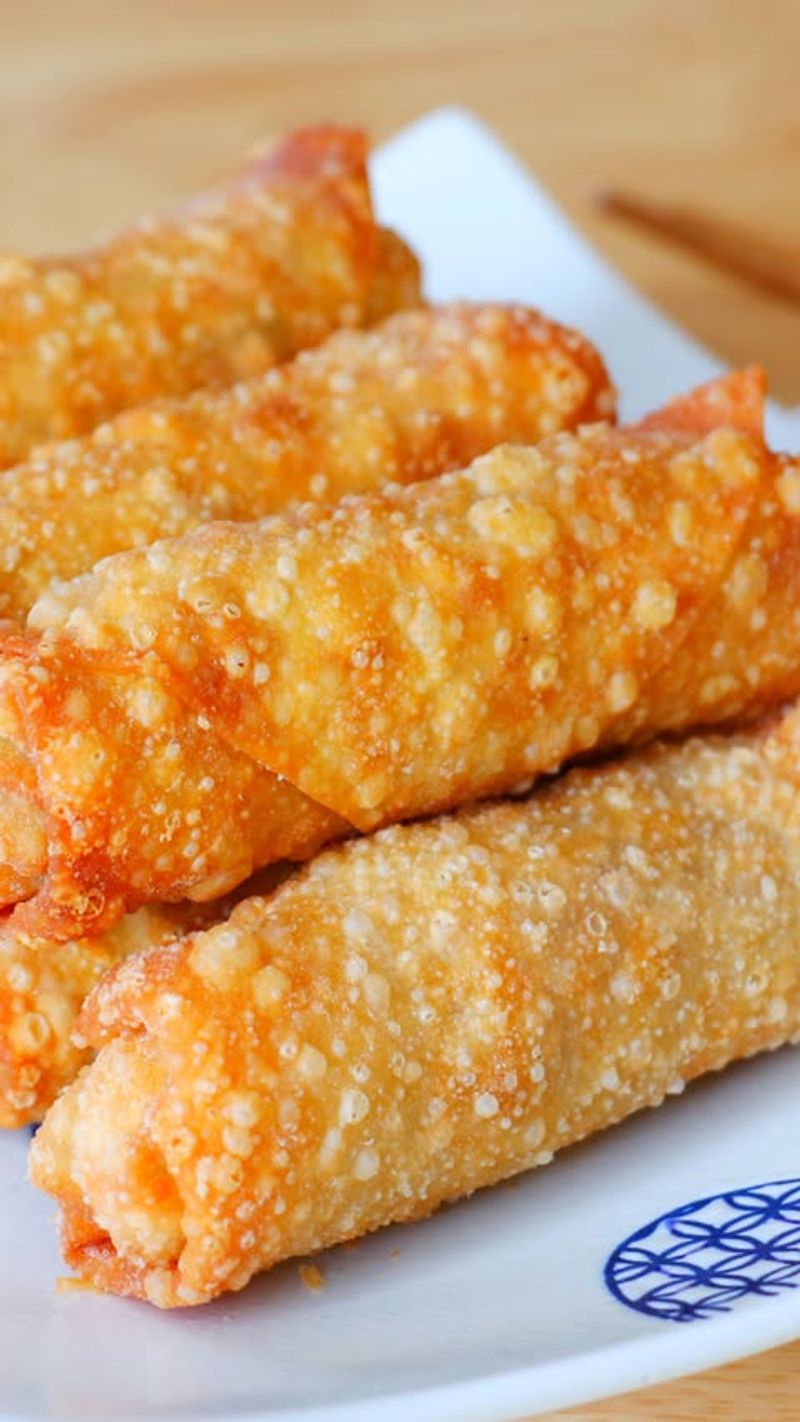
Don’t be fooled by their small size—egg rolls pack a surprising calorie punch. Deep-fried and filled with greasy pork, noodles, and cabbage, each roll can contain 200–300 calories, not counting the sweet dipping sauces.
What starts as an appetizer can turn into a meal’s worth of fat and sodium if you eat more than one. The crispy shell absorbs oil like a sponge, making it hard to enjoy without going overboard. If you’re craving a starter, go for steamed veggie dumplings or a light broth-based soup to keep your meal on a healthier path.
5. Lo Mein
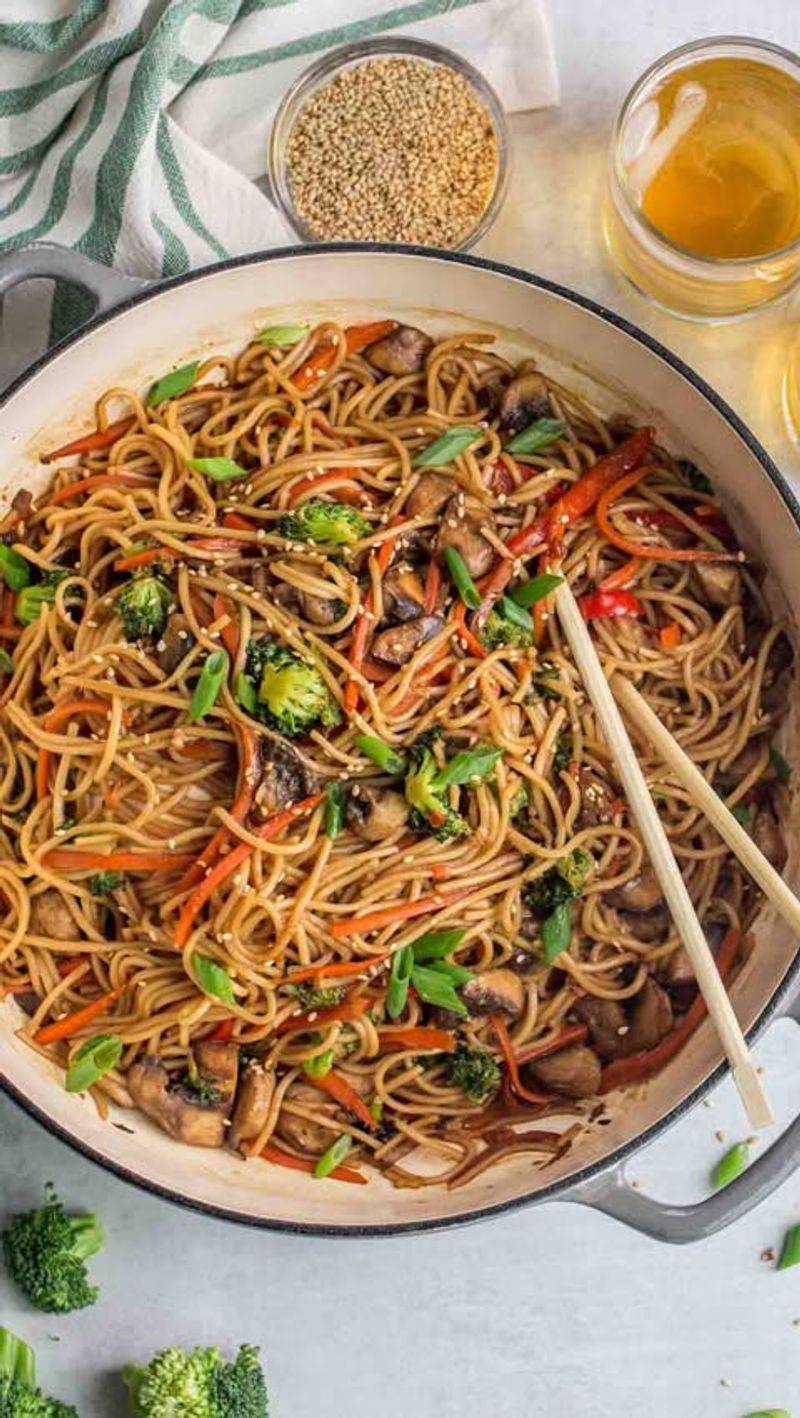
Lo mein noodles may be comfort food gold, but they’re often stir-fried in loads of oil and soy sauce. This turns a basic noodle dish into a salty, greasy bowl of refined carbs with minimal vegetables or lean protein.
Even when chicken or shrimp is added, the oily base keeps it from being a balanced option. A standard serving can climb past 800 calories and leave you feeling bloated.
If you love noodles, ask if they can prepare it with less oil or opt for a veggie stir-fry with rice noodles to lighten things up.
6. Orange Chicken
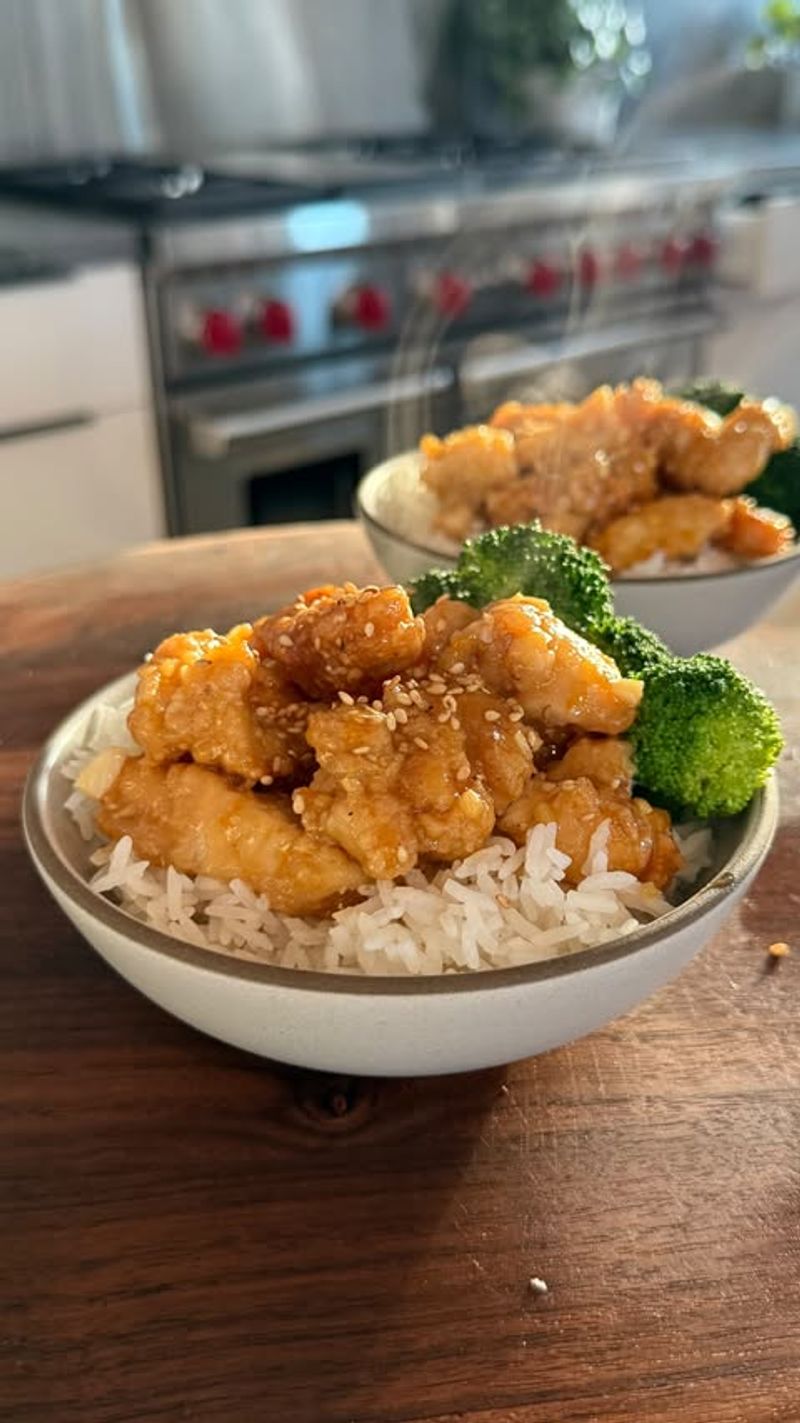
Crispy, sweet, and addictively tangy, orange chicken is a classic calorie trap. The chicken is breaded and deep-fried, then coated in a thick, sugary sauce that can rival candy in sweetness.
While delicious, one portion often delivers more sugar than a dessert and more fat than a burger. Pair it with rice, and your meal easily tips over 1,000 calories.
Don’t let the orange fool you—it’s not the healthy kind. If you’re looking for that citrus kick, ask for a grilled chicken option with a lighter sauce or enjoy it as an occasional treat only.
7. Crab Rangoon
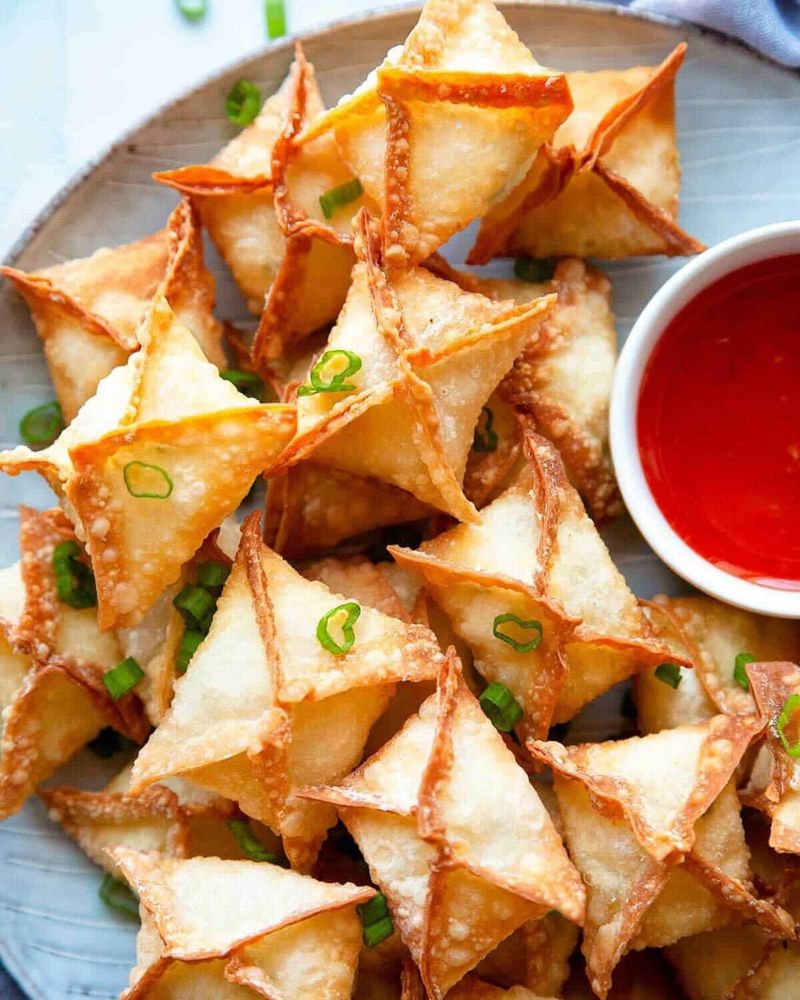
This creamy, crunchy appetizer is far from a light starter. Filled with cream cheese and imitation crab, each Rangoon is wrapped in a wonton and deep-fried until golden.
The result? A rich bite that’s high in saturated fat, sodium, and empty calories. One order of six can pack more than 400 calories, and that’s before dipping sauces enter the picture.
You won’t find much real seafood here—just a cheesy filling disguised as a seafood dish. If you’re looking to start your meal right, opt for edamame or a clear soup instead of this deep-fried indulgence.
8. Kung Pao Chicken
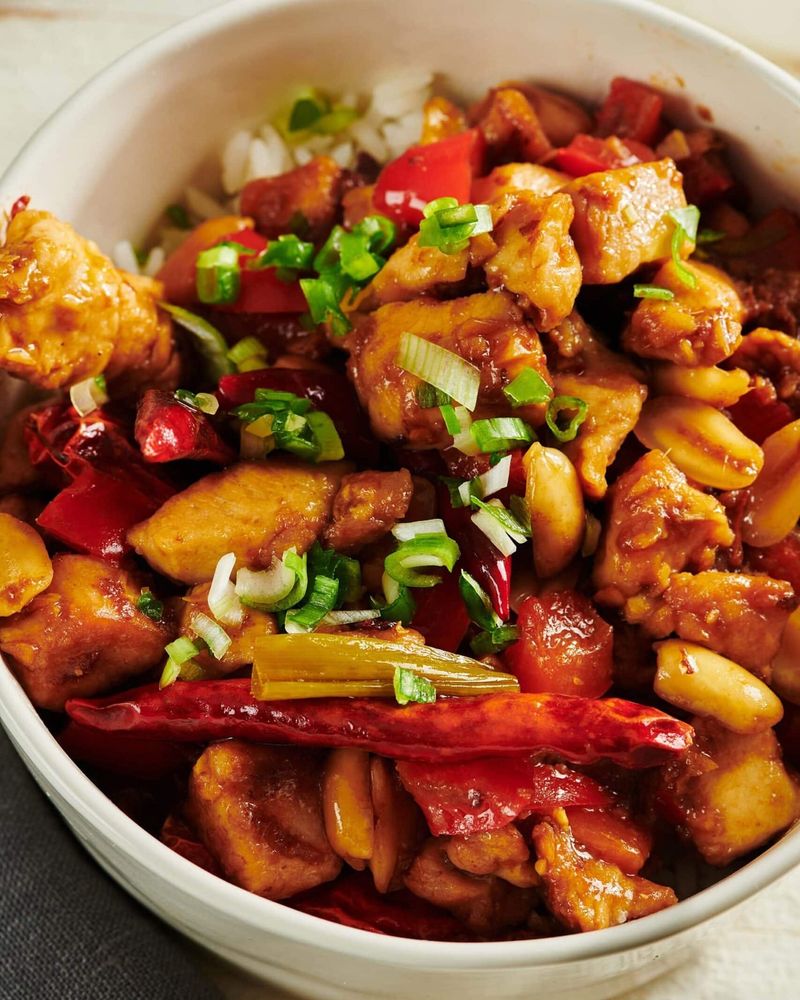
Kung Pao Chicken sounds like a spicy, protein-packed choice, but most takeout versions are far from clean. Chicken is often fried and coated in a glossy, sugary sauce with minimal veggies to balance it out. Add a handful of peanuts and you’ve got a dish high in fat, sodium, and calories.
While some versions include bell peppers and zucchini, they’re often lost in a sea of sauce. If you’re craving something fiery, ask for steamed or grilled chicken with the sauce on the side—or better yet, make your own at home using less oil and sugar.
9. Chow Mein

Chow mein may look like a noodle lover’s dream, but it’s often a greasy trap. Made with either soft or crispy noodles, it’s typically stir-fried in oil with minimal vegetables and drenched in salty sauce.
A full serving is usually high in carbs and calories and leaves little room for nutrition. Even the “crispy” version can soak up more oil than you’d expect.
If you’re after noodles, look for dishes labeled “steamed” or “light” and ask for extra veggies to add some balance. Otherwise, this comfort dish may leave you feeling anything but light.
10. Sesame Chicken
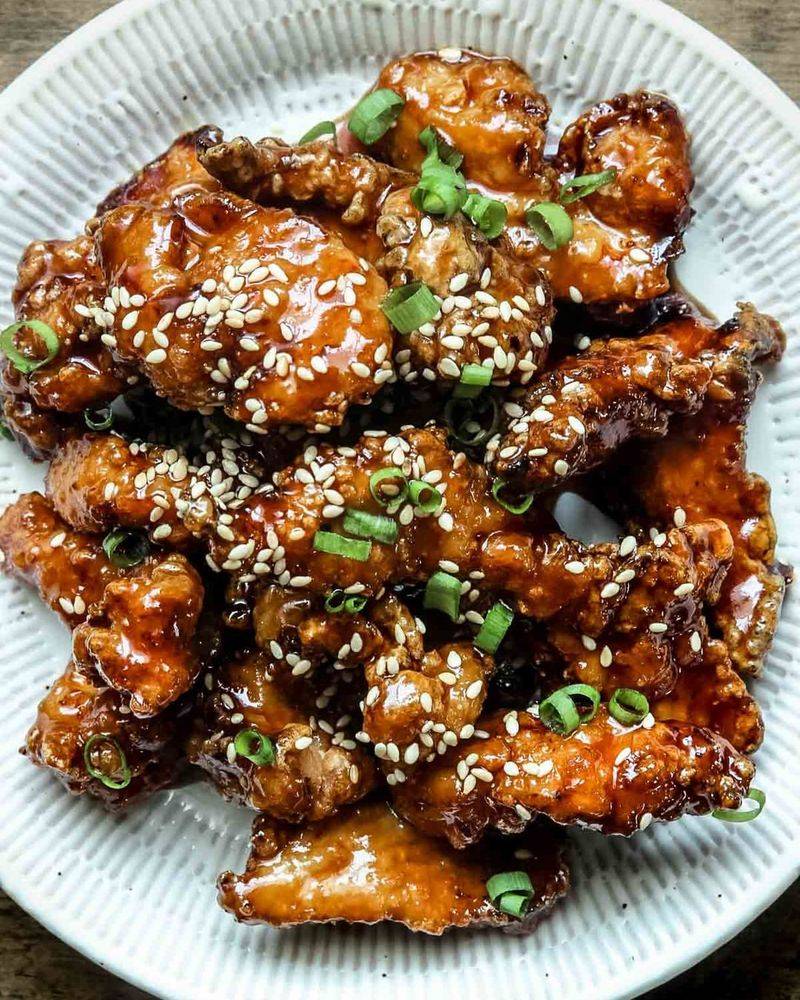
Sesame chicken is as sweet and sticky as it is satisfying, but nutritionally, it misses the mark. It’s typically deep-fried and bathed in a thick sauce loaded with sugar, turning what could be a solid protein into a calorie-dense indulgence.
The sprinkle of sesame seeds doesn’t do much to offset the sodium or the heavy use of oil. One serving can easily contain over 1,000 calories—before the rice. If you love sesame flavor, try a stir-fry with lean chicken, broccoli, and a light sesame glaze to keep the taste and skip the greasy aftershock.
11. Szechuan Beef
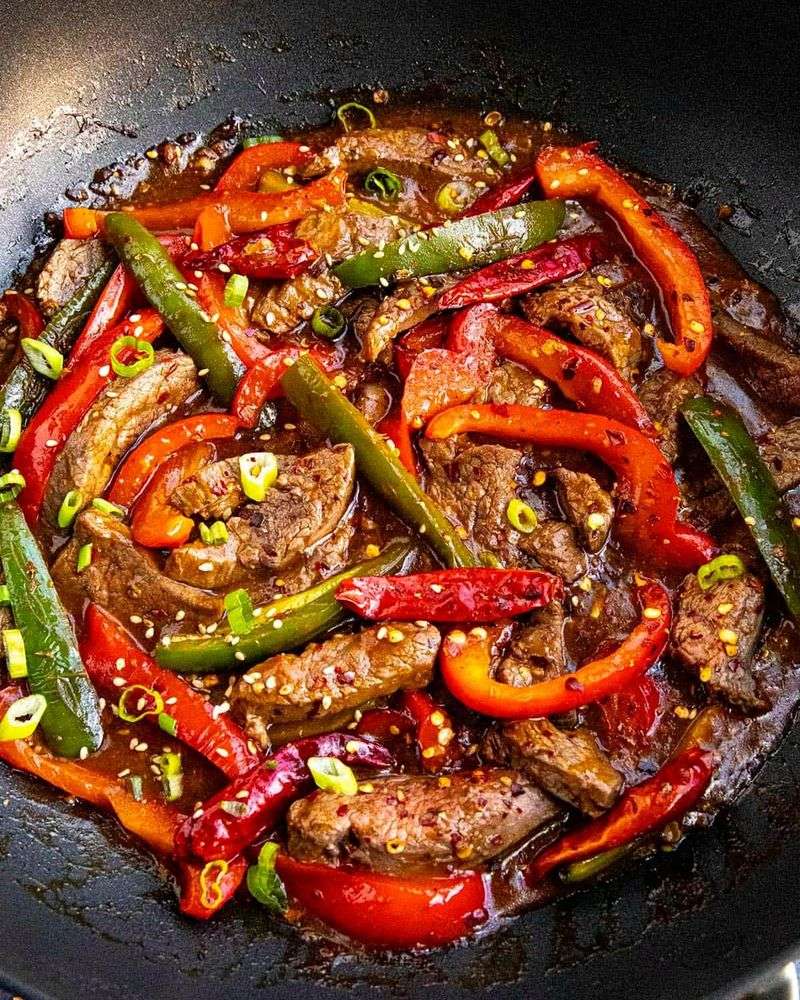
This fiery beef dish brings the heat—but also the fat. Szechuan beef is usually deep-fried or flash-fried in oil, then tossed in a spicy sauce that’s often high in sugar and sodium.
Despite its bold flavors, it’s not the healthiest choice on the menu. The beef is often fatty and the sauce thick and glossy, making each bite more indulgent than energizing.
Add white rice to the equation, and you’ve got a high-calorie, high-carb meal that lacks fiber and balance. For spicy cravings, opt for grilled protein with a side of steamed vegetables instead.
12. Moo Shu Pork
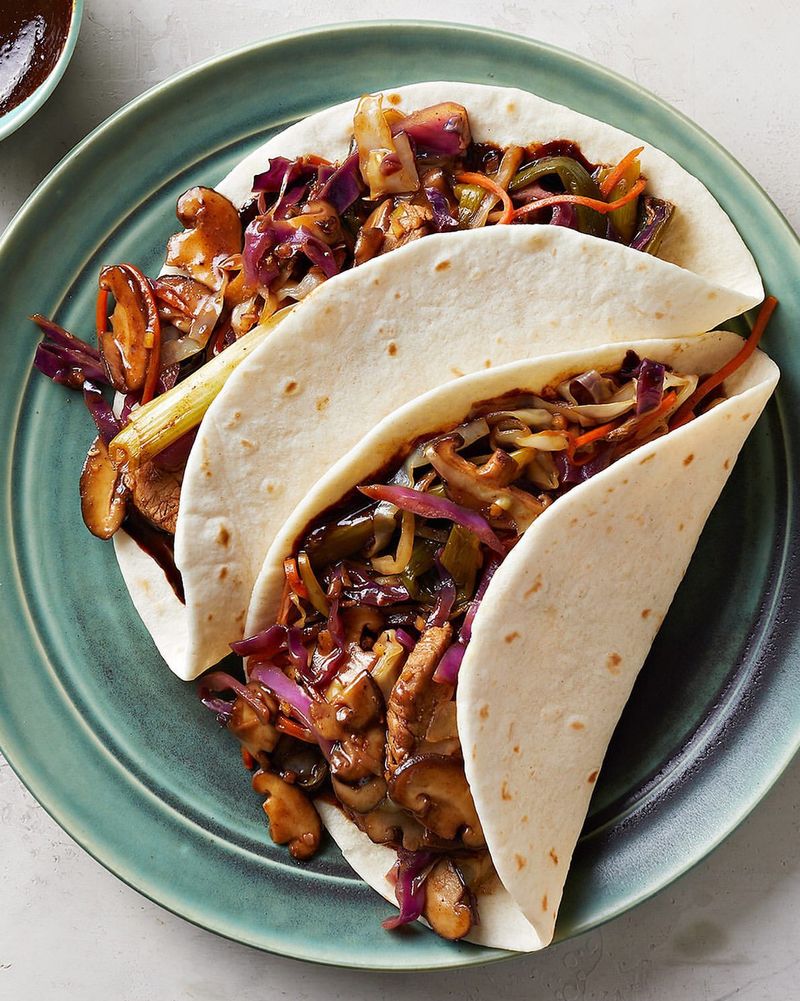
This DIY-style dish may seem interactive and fun, but it hides a nutritional downside. Moo Shu Pork is often stir-fried in oil and soy-based sauce, then served with thin pancakes that resemble mini tortillas.
Add hoisin sauce to the mix and you’ve got a sweet-and-savory combo high in sodium and refined carbs. The dish includes veggies like cabbage and mushrooms, but they’re usually drowned in sauce.
It’s easy to overeat when assembling wrap after wrap. For a smarter option, skip the pancakes and load up on the filling with extra vegetables and a lighter sauce.
13. Hot and Sour Soup
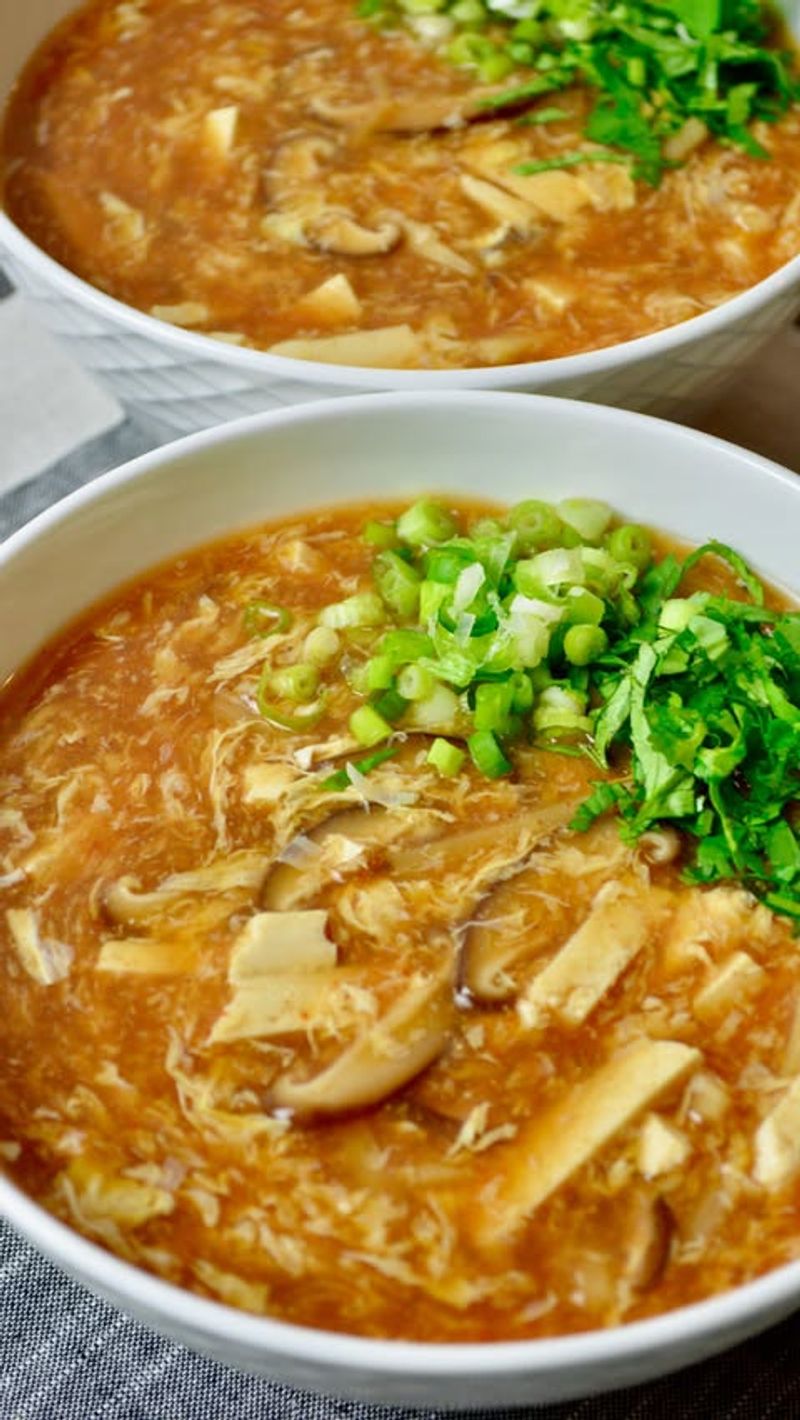
Hot and Sour Soup seems like a healthy pick, but it’s not always light. While the tofu, mushrooms, and vinegar offer some nutritional value, most restaurant versions are thickened with cornstarch and heavily seasoned with soy sauce, making it surprisingly high in sodium.
A single bowl can have over 900 milligrams of salt, and the starch can add unnecessary calories. It’s flavorful but not as guilt-free as it appears. If you’re craving soup, look for broth-based alternatives with fresh vegetables, or ask your server if they offer a low-sodium version to keep your meal in check.
14. Beef with Broccoli
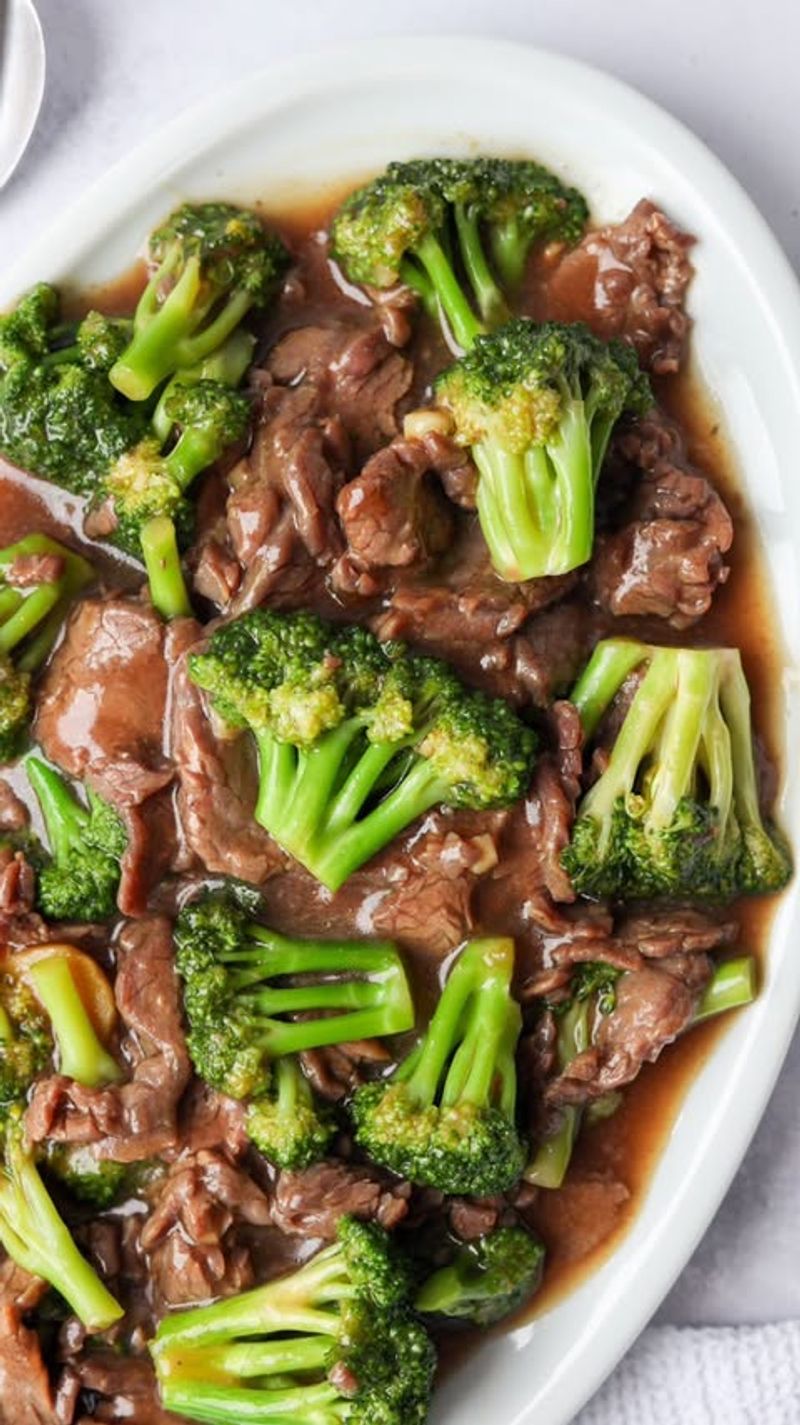
Beef with Broccoli might seem like a healthy option, but dishes can vary widely in sodium and oil content. The beef is often stir-fried with a rich sauce, adding extra calories and fat.
Requesting less sauce and adding more broccoli can help make the dish healthier. Opting for brown rice as a side can increase fiber intake, aligning the meal with dietary preferences. These tweaks can make a satisfying meal more nutritious.
15. Dim Sum
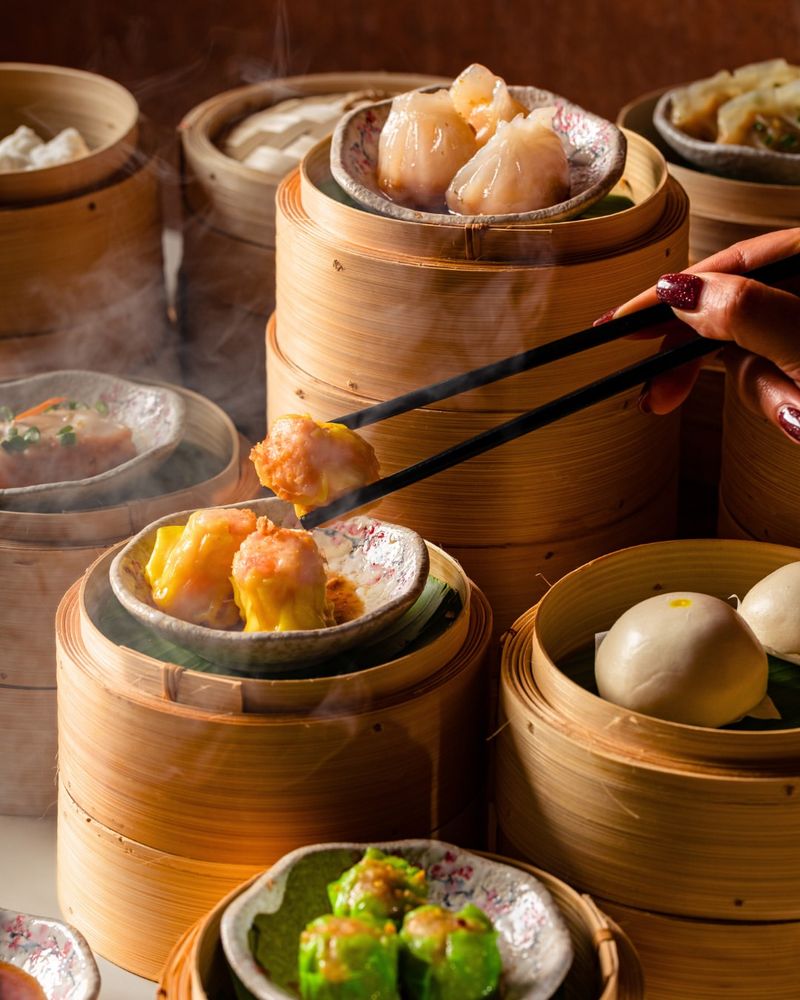
Dim sum may look like a dainty, bite-sized affair, but don’t let the small portions fool you. Many popular dim sum items—like pork buns, shrimp dumplings, and pan-fried turnip cakes—are high in refined carbs, sodium, and saturated fats.
Steamed options may seem lighter, but they often contain fatty meats and starchy fillers. Add dipping sauces, and the salt content skyrockets. Plus, the endless flow of dishes encourages overeating.
What starts as a light brunch can easily become a calorie overload. While delicious and fun to share, dim sum is rarely the guilt-free meal it appears to be.
16. Salt and Pepper Squid
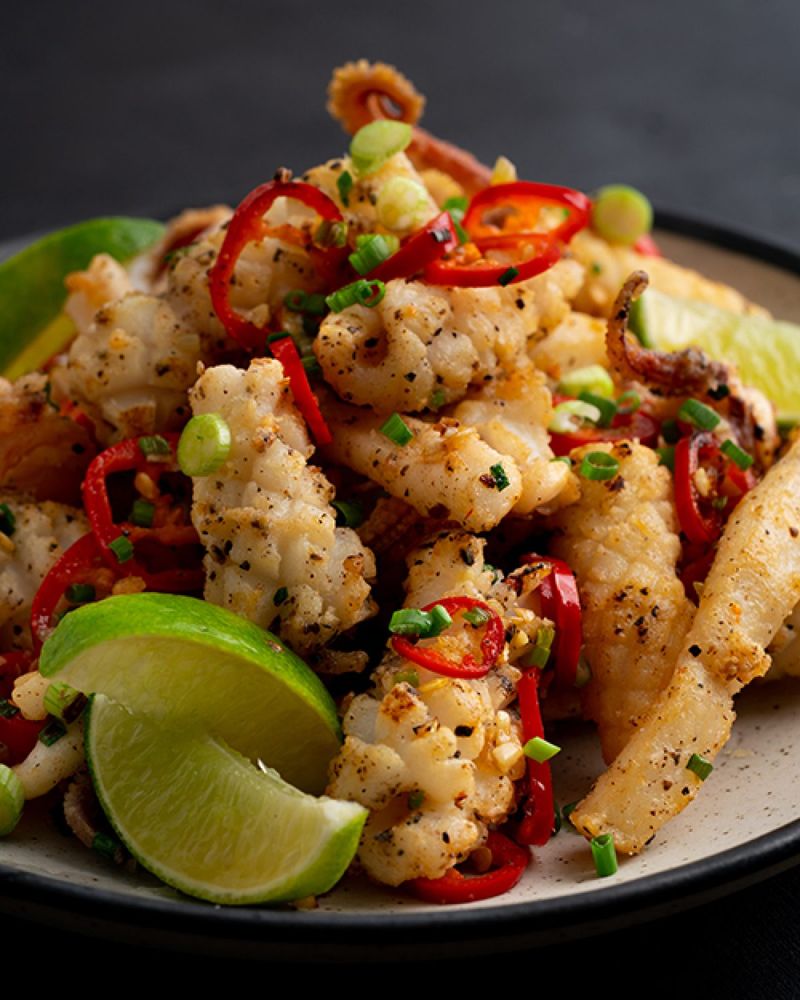
Salt and Pepper Squid offers a crispy, savory delight that’s hard to resist. The dish typically features tender squid pieces, lightly battered and fried to golden perfection. Garnished with chili and spring onions, it offers a burst of flavor in every bite.
However, its preparation often involves deep frying, increasing its calorie and fat content. Those conscious of their diet may want to enjoy this dish sparingly. Squid has been a staple in Chinese cuisine for centuries, offering a taste of the sea with a spicy twist.
17. Honey Walnut Shrimp
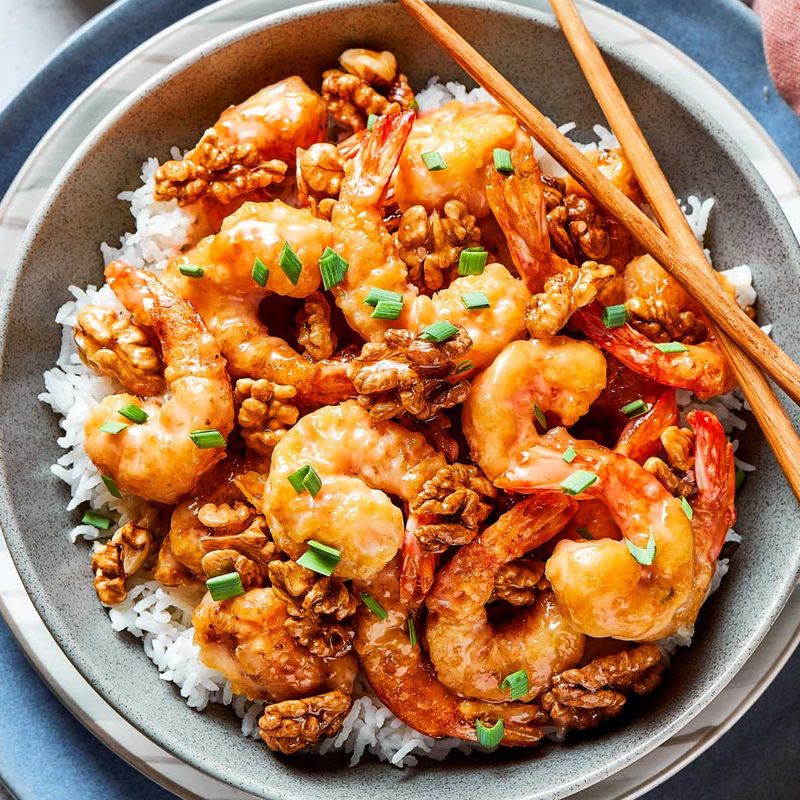
This dish gives shrimp a decadent makeover—but it’s not doing your waistline any favors. Each piece is battered, fried, and coated in a creamy, sugary mayonnaise-based sauce, then topped with candied walnuts.
While shrimp itself is low in fat and high in protein, this preparation turns it into a high-calorie, high-fat indulgence. A single serving can approach 1,000 calories, thanks to all the added sugar and oil.
It’s more like dessert disguised as seafood. If you love shrimp, look for steamed or stir-fried versions with fresh veggies and a light garlic or ginger sauce instead.
18. Boneless Spare Ribs
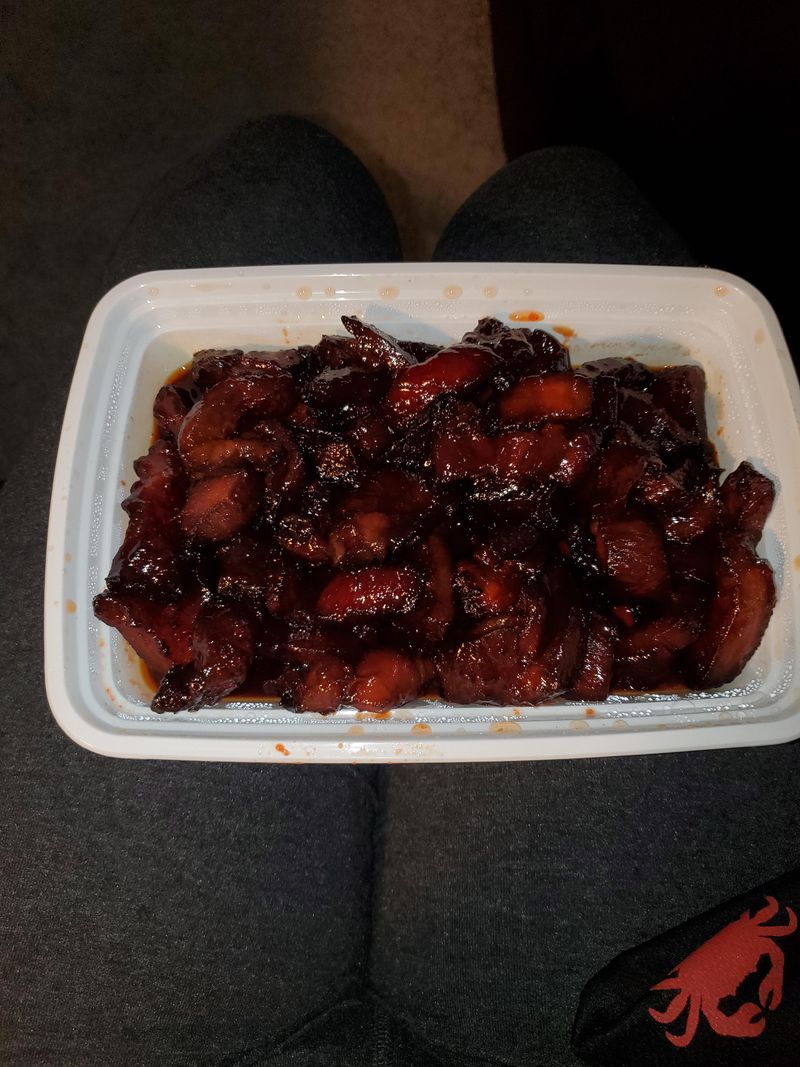
These tender, saucy strips may look leaner than bone-in ribs, but don’t be fooled—they’re often just as fatty. Boneless spare ribs are typically made from marbled cuts and smothered in a thick, sugary sauce that adds significant calories.
One small container can deliver more than 1,000 calories and a full day’s worth of fat. The sweetness of the glaze and soft texture make it easy to overeat, especially when paired with rice or noodles.
If you’re in the mood for something meaty, opt for grilled or steamed dishes without added sauce to avoid this sneaky splurge.
Leave a comment